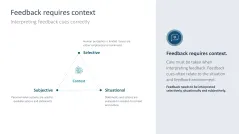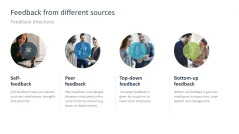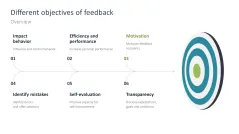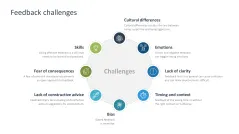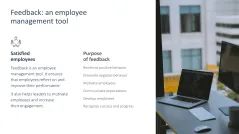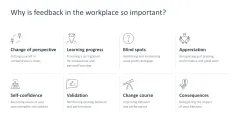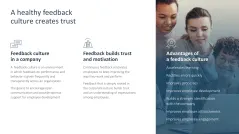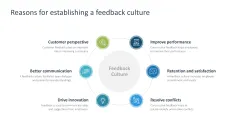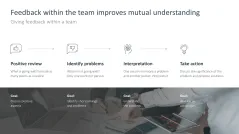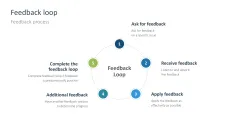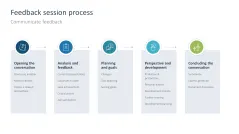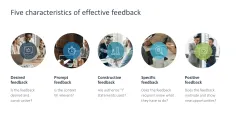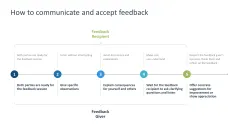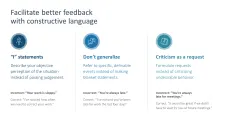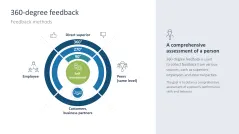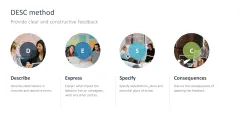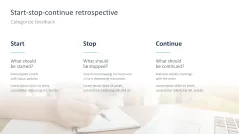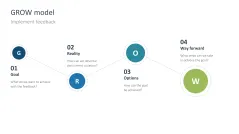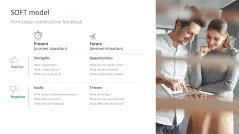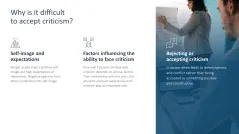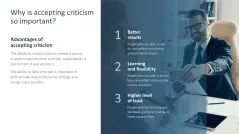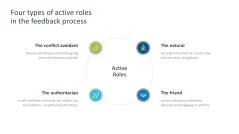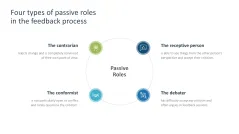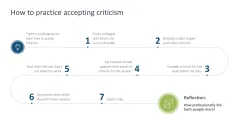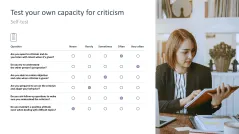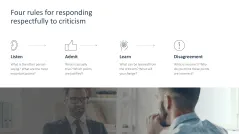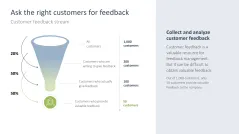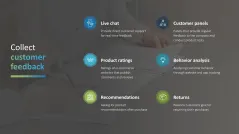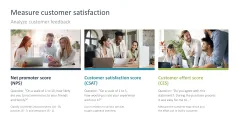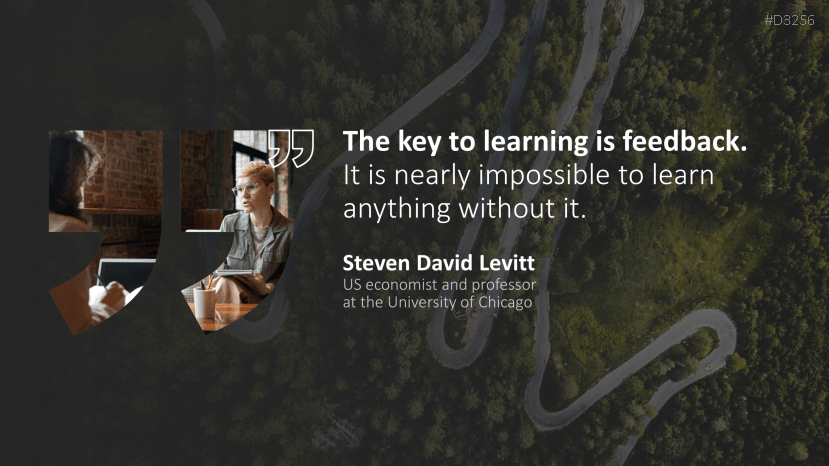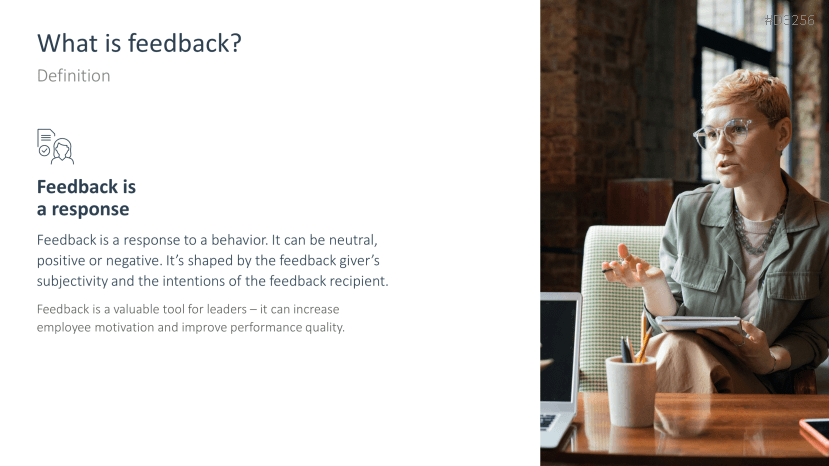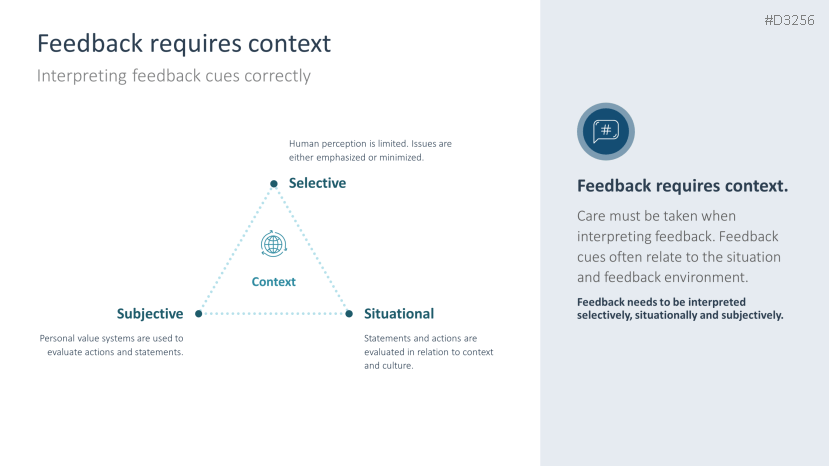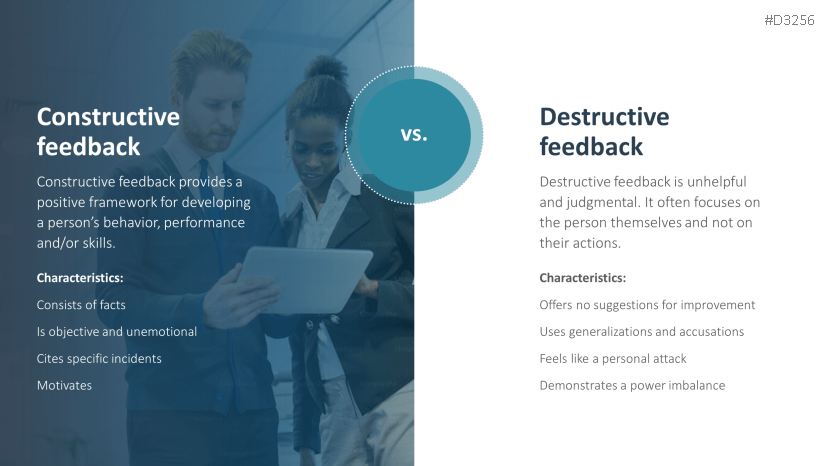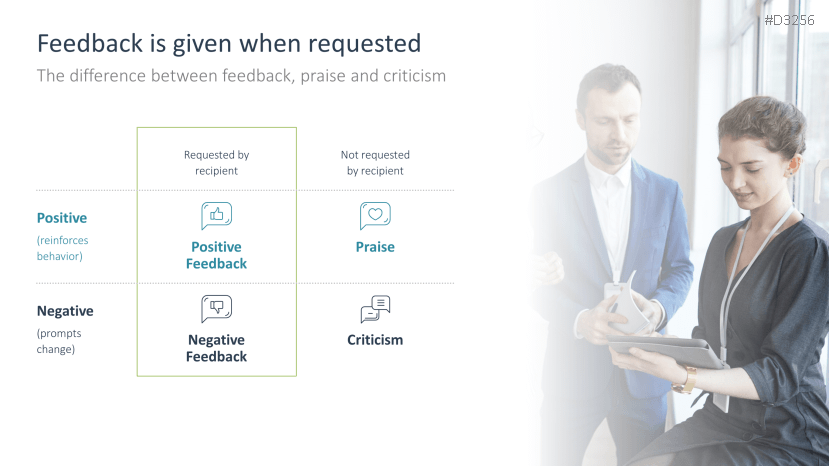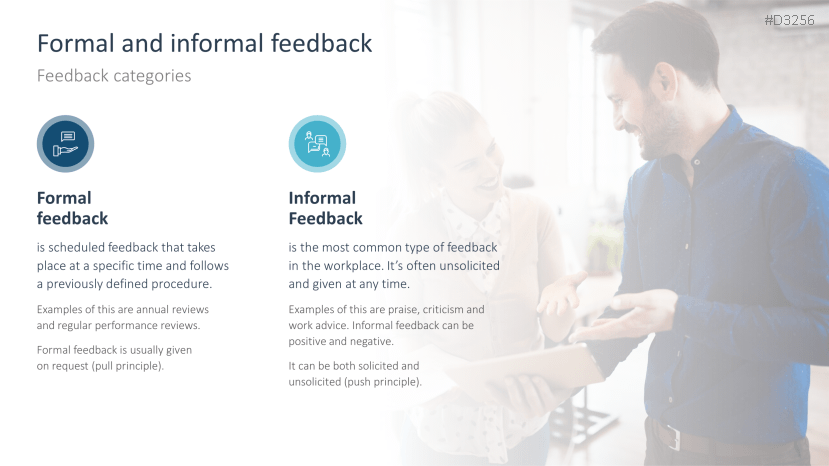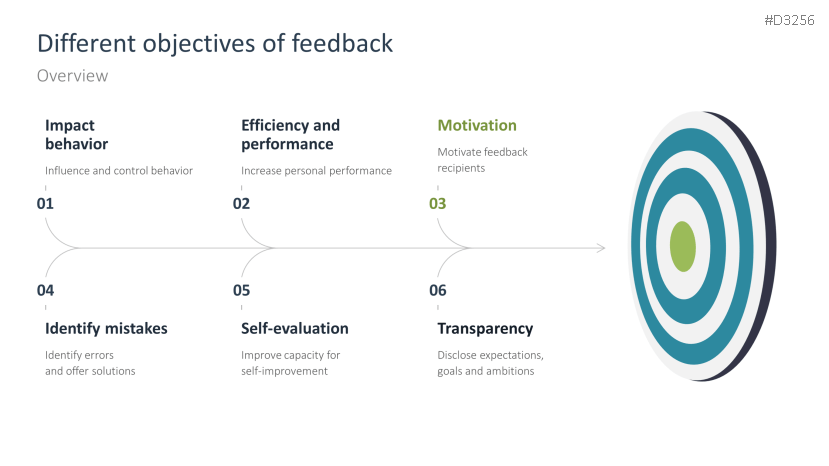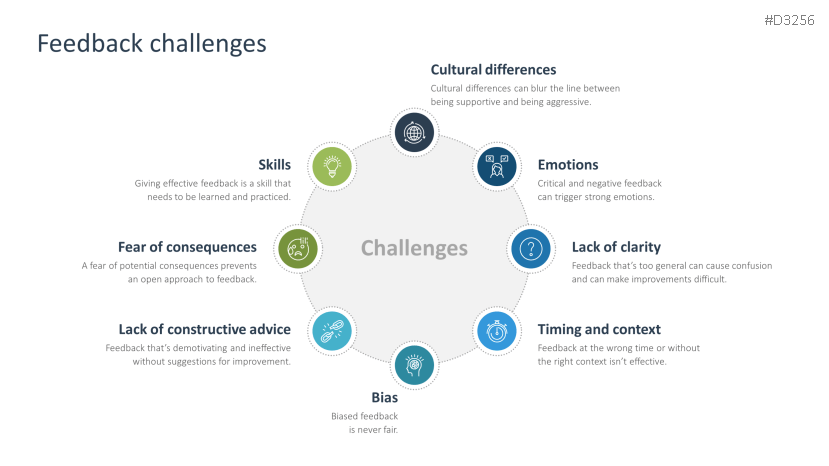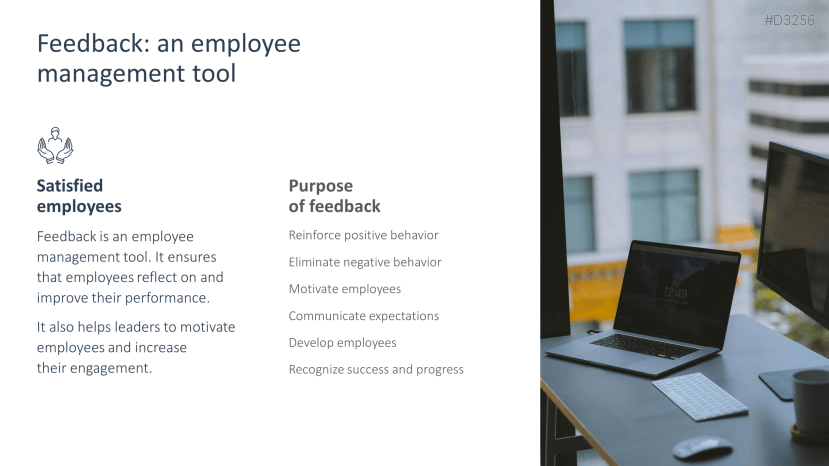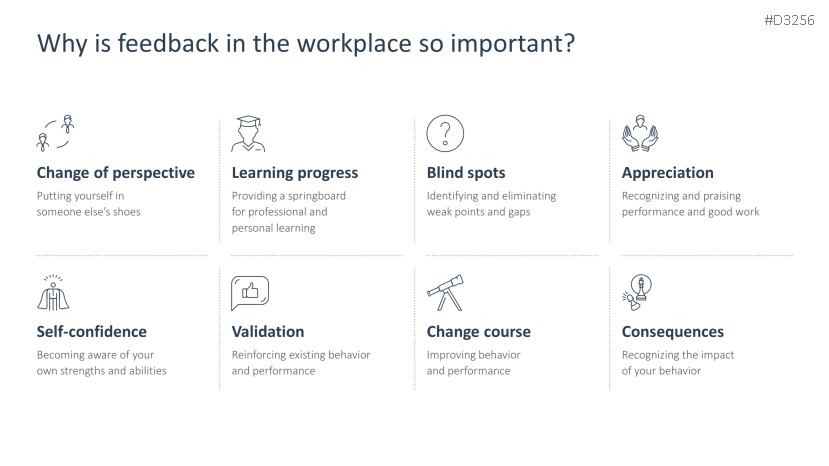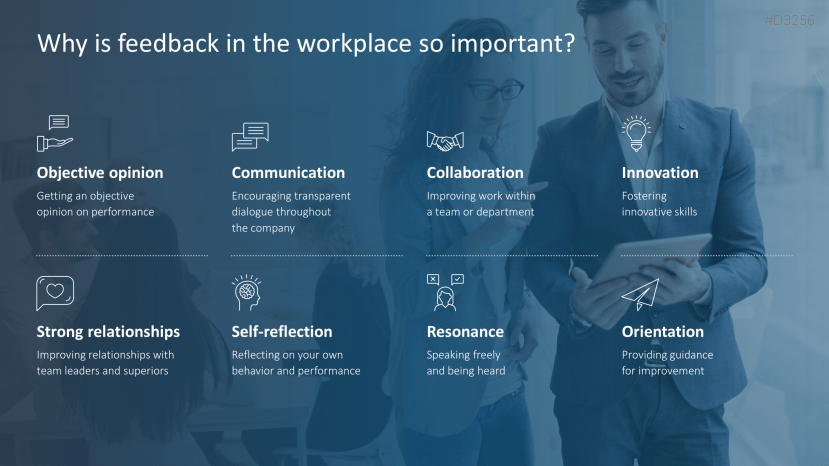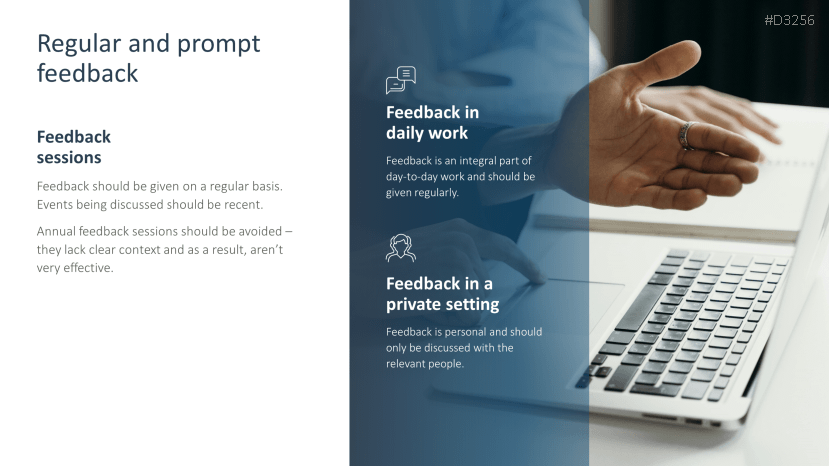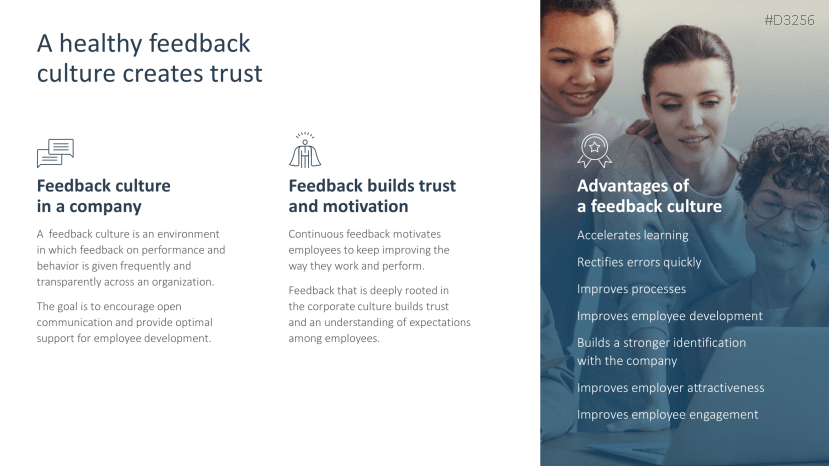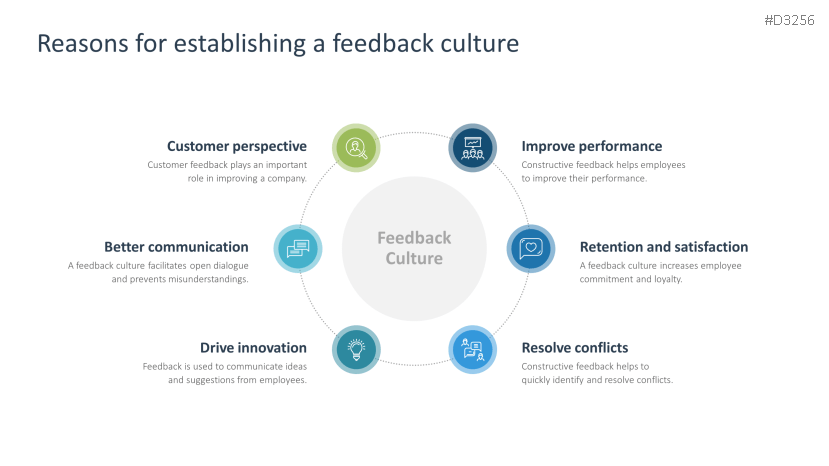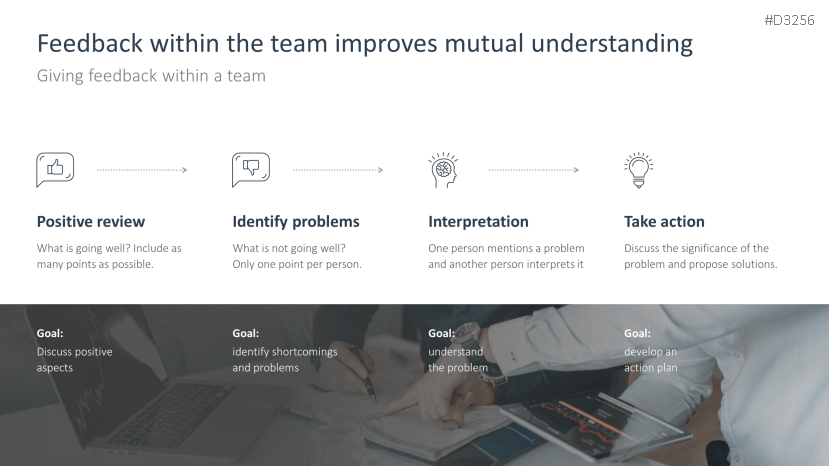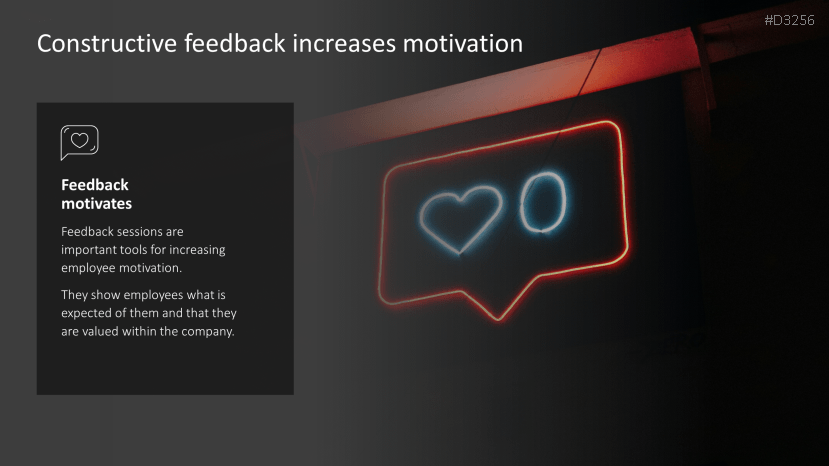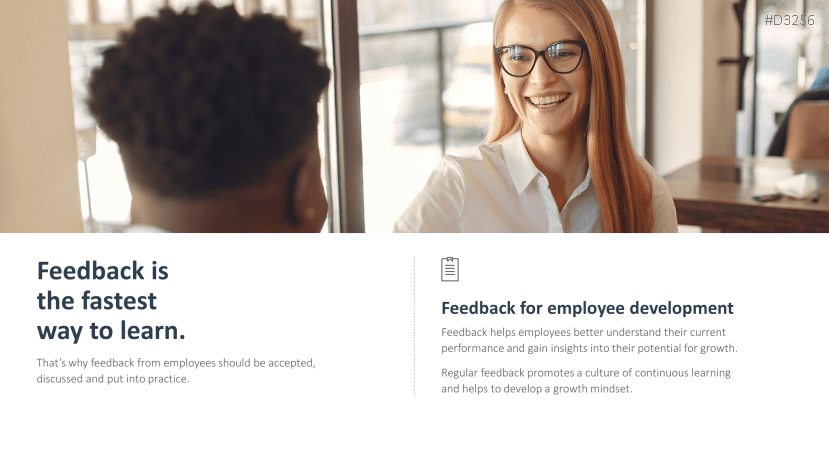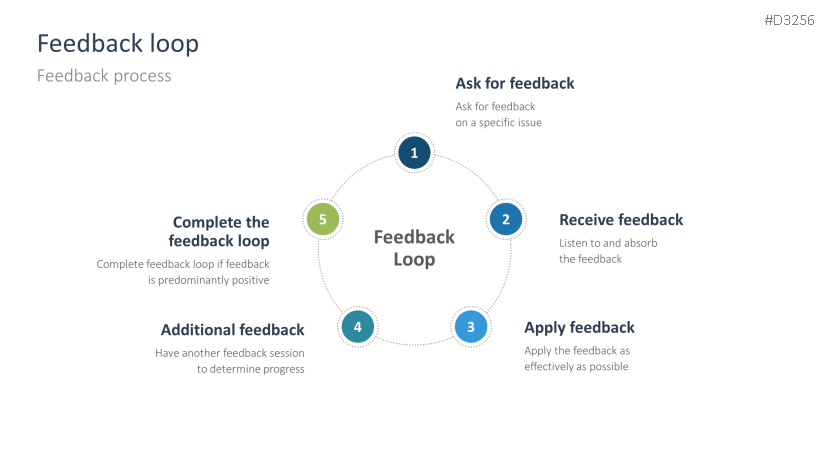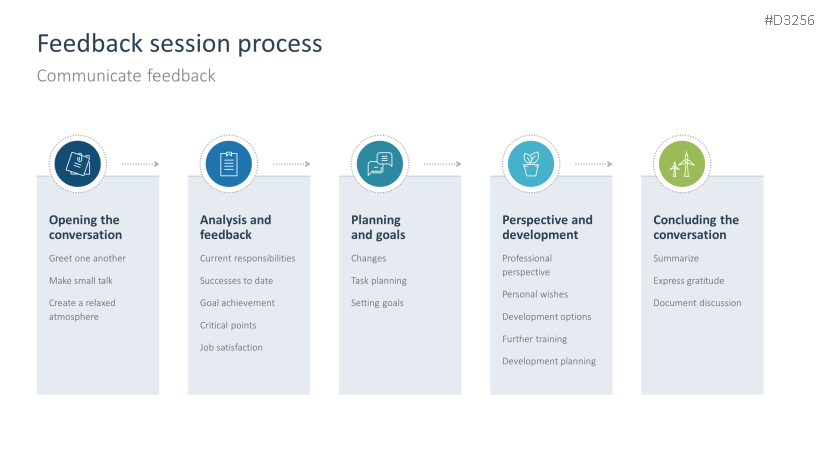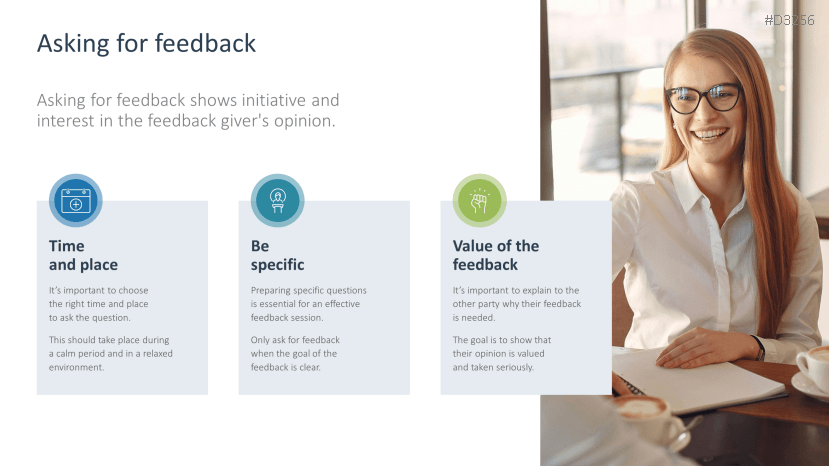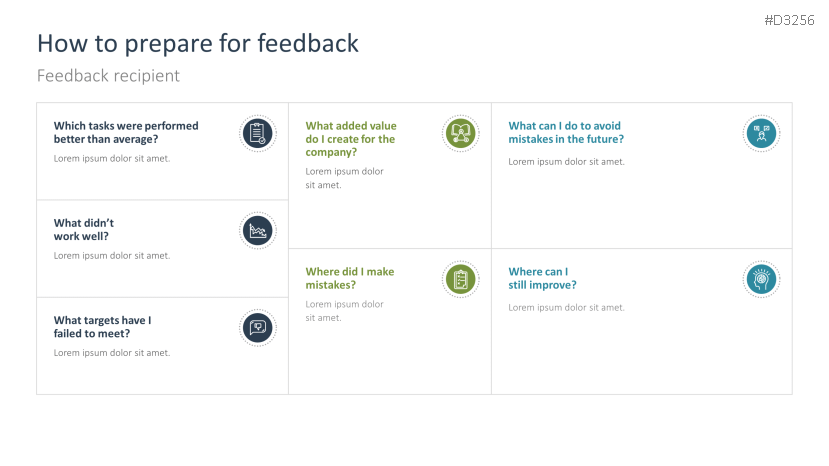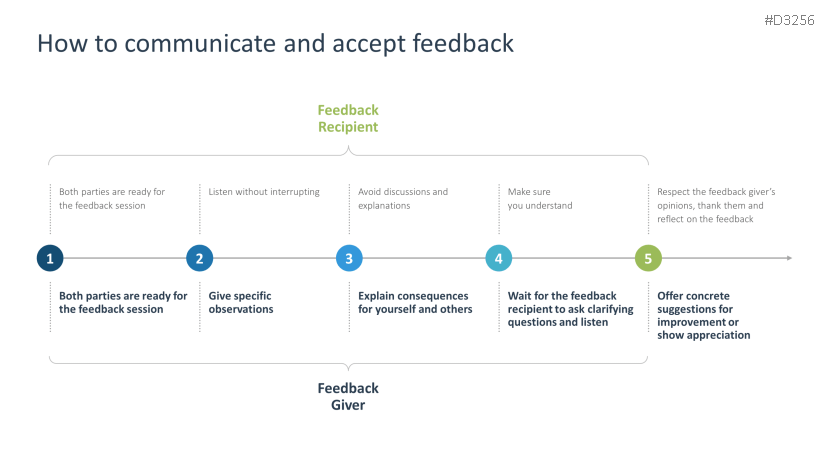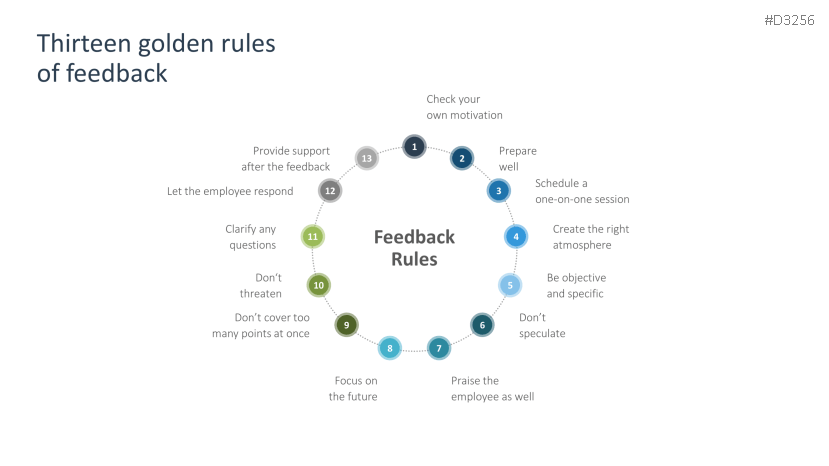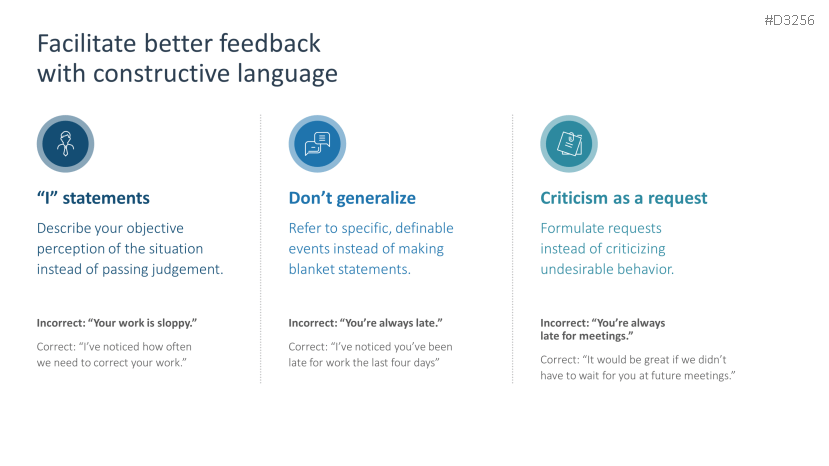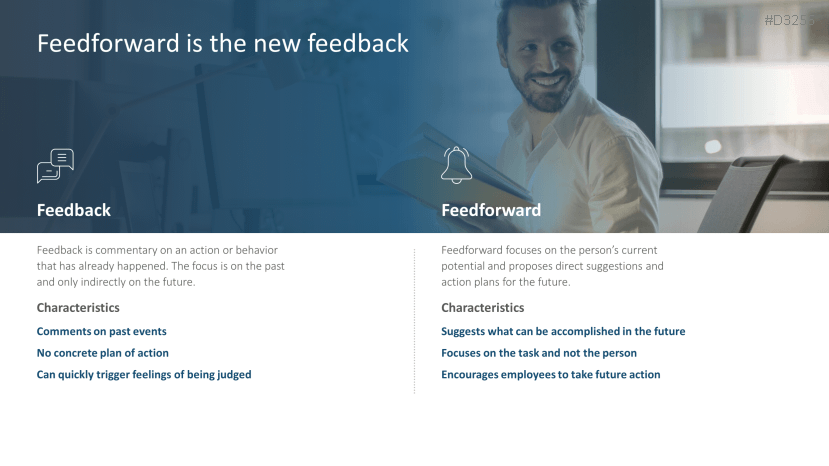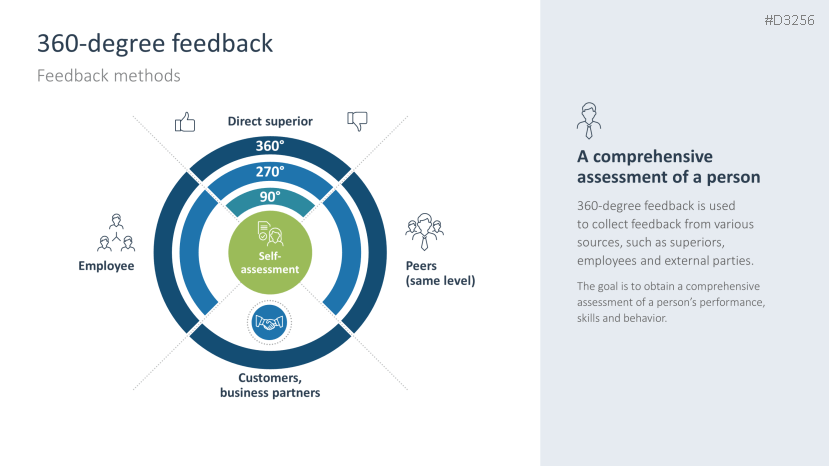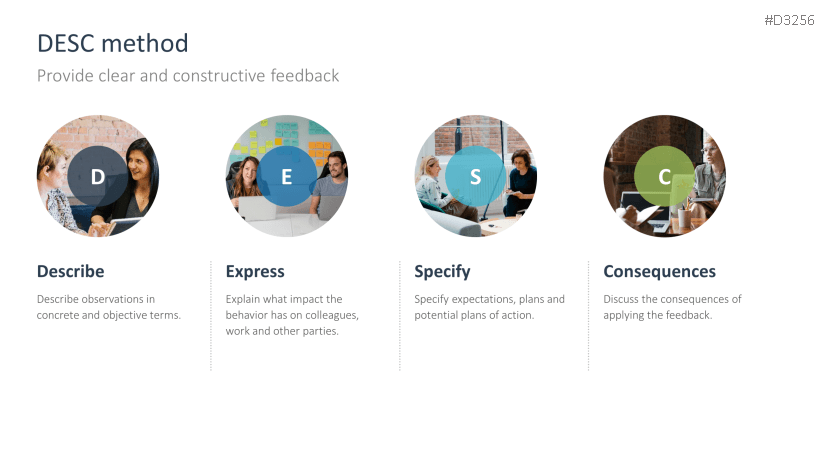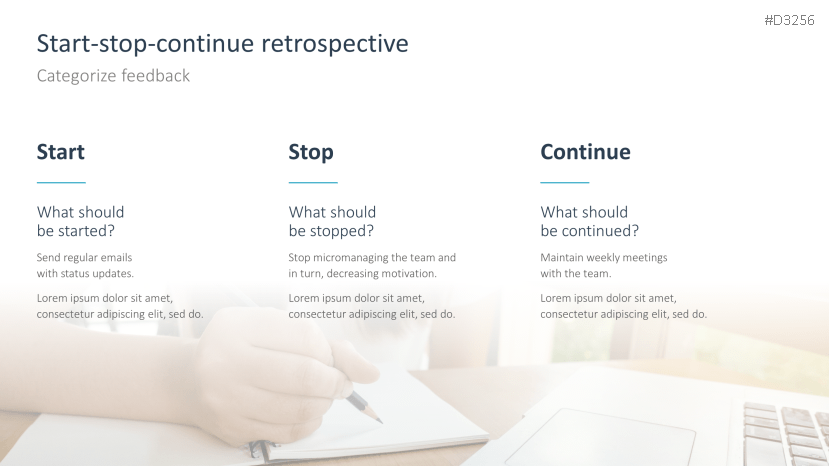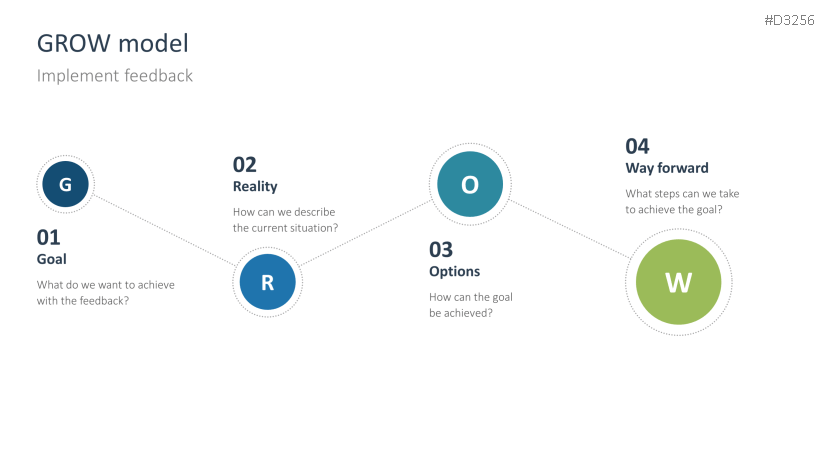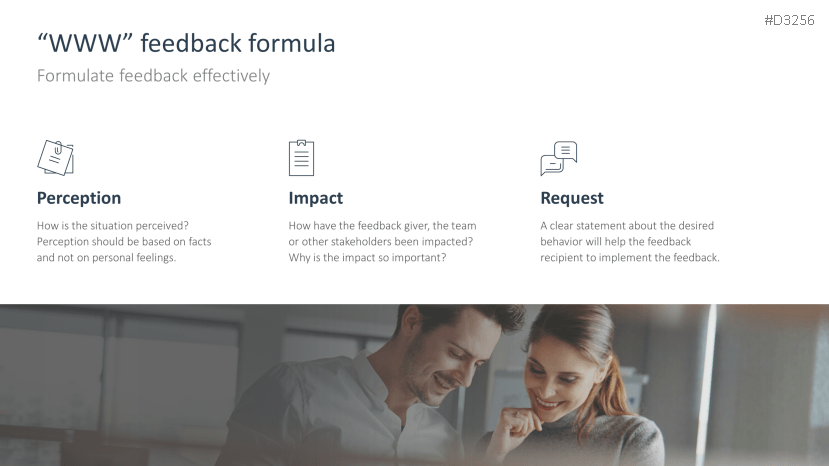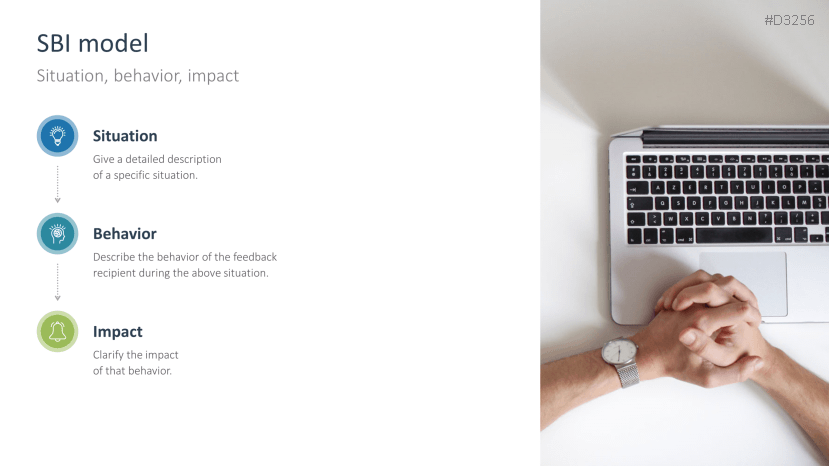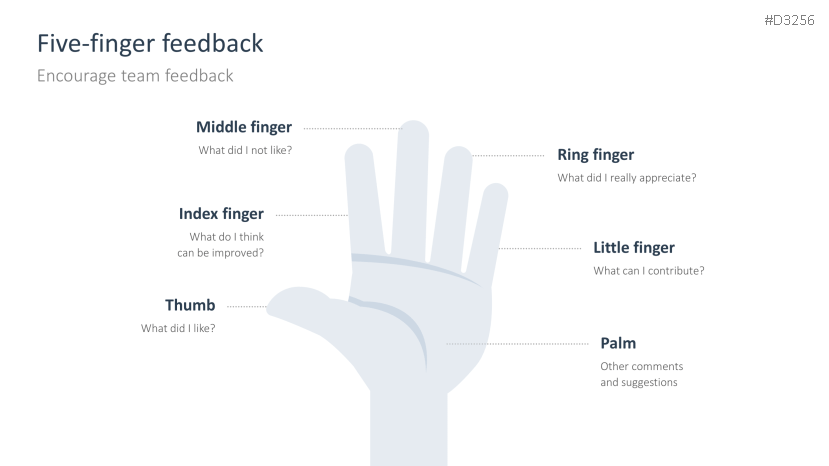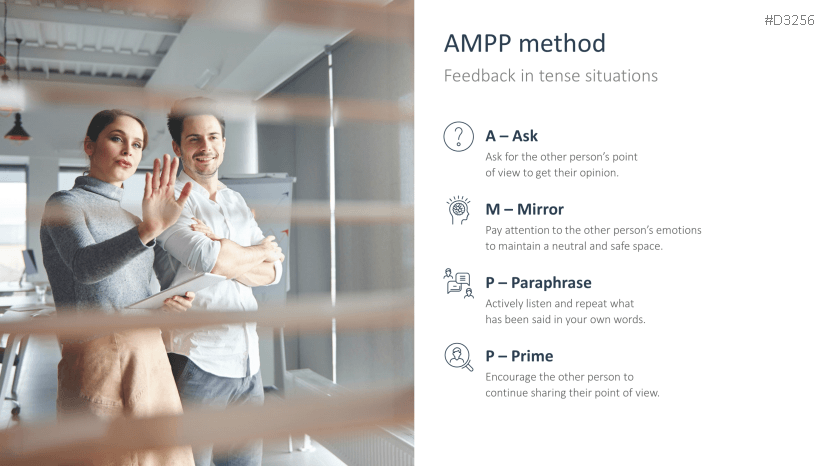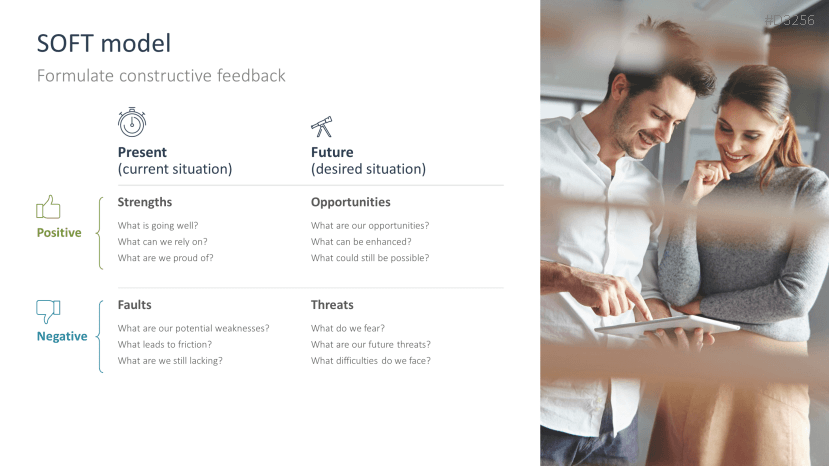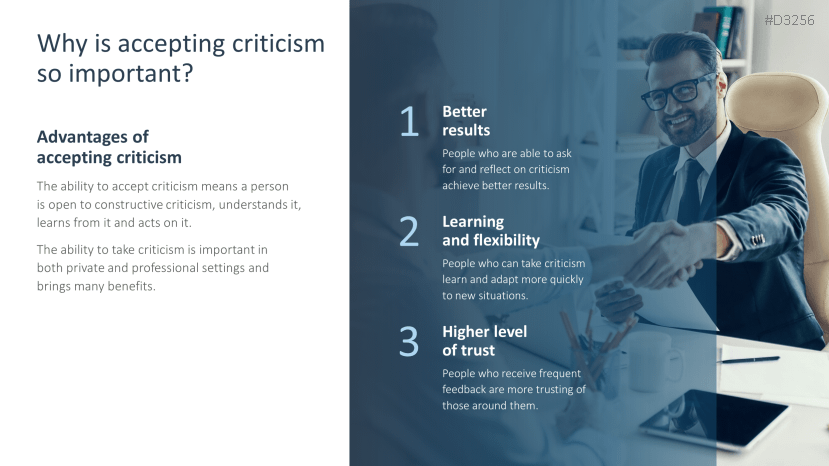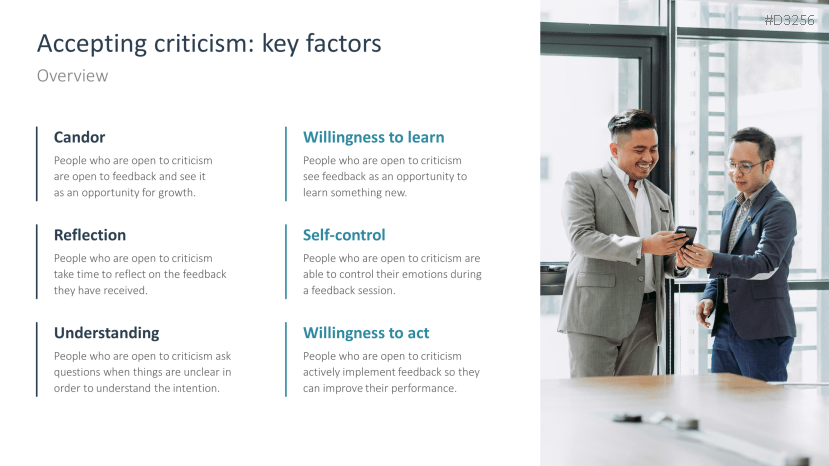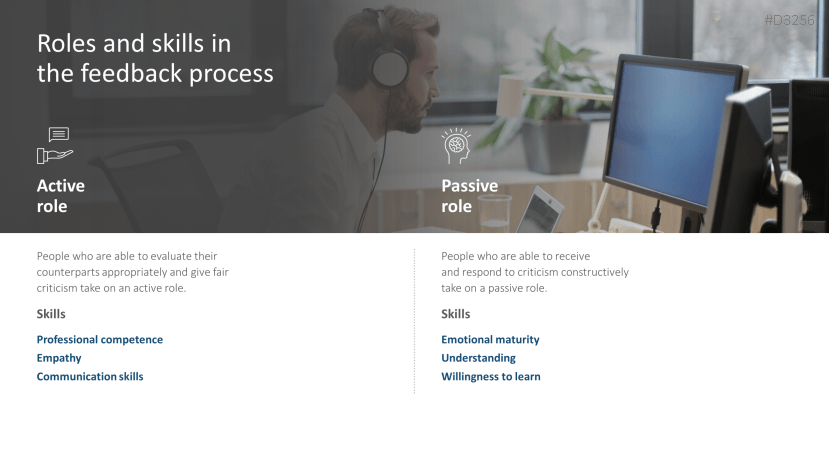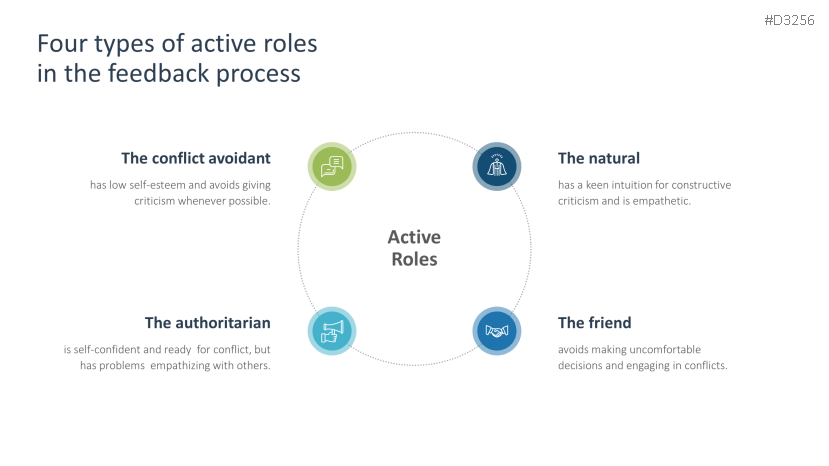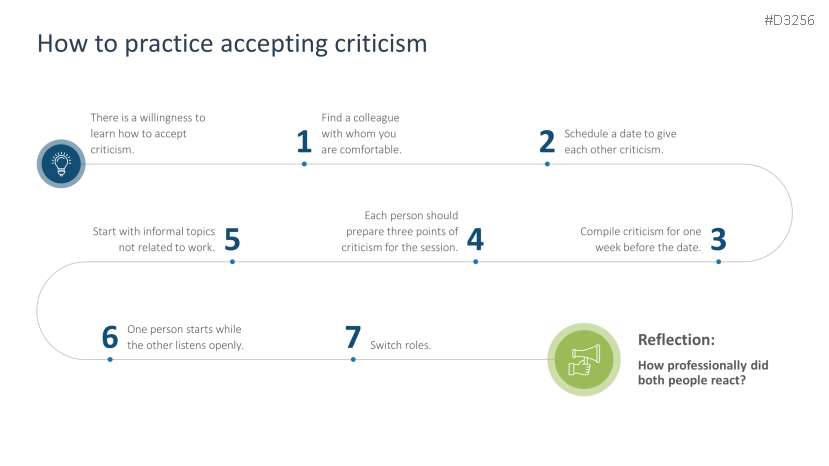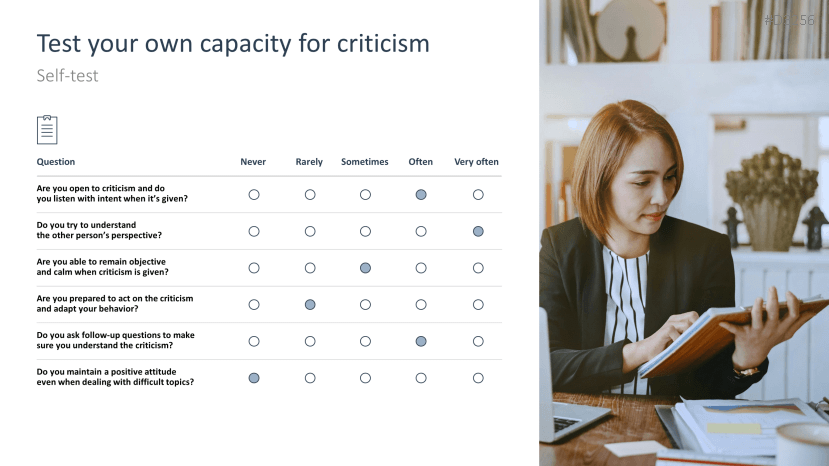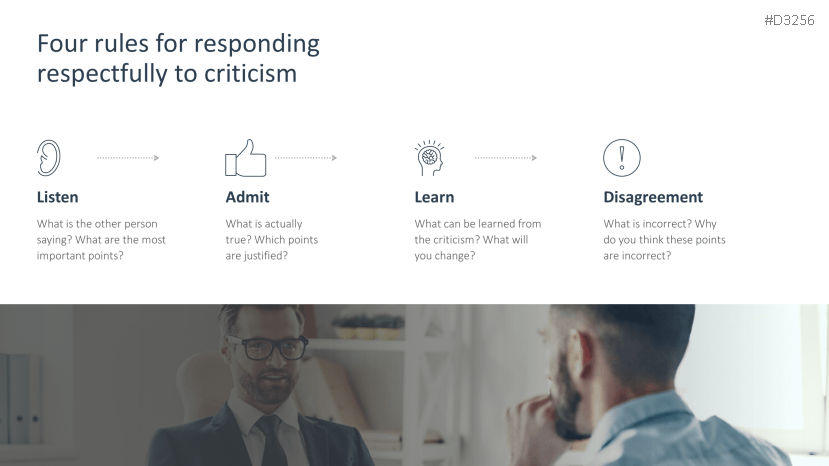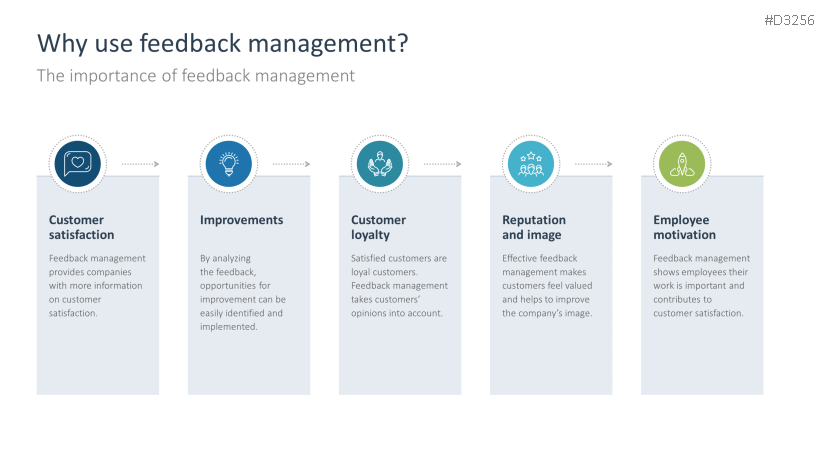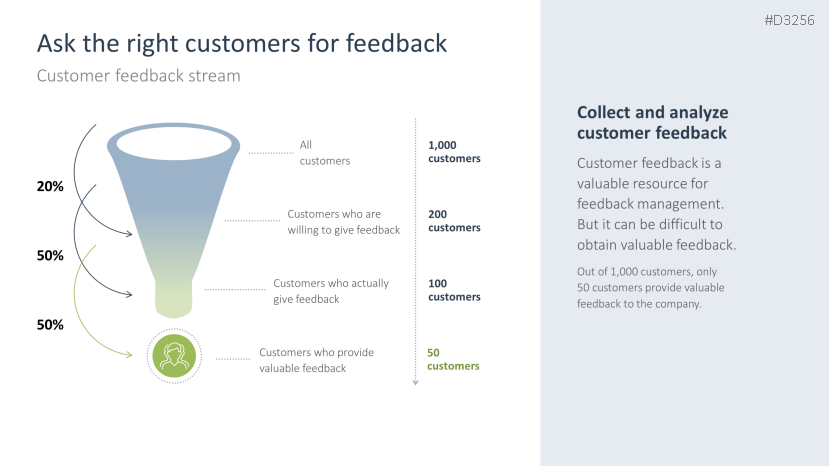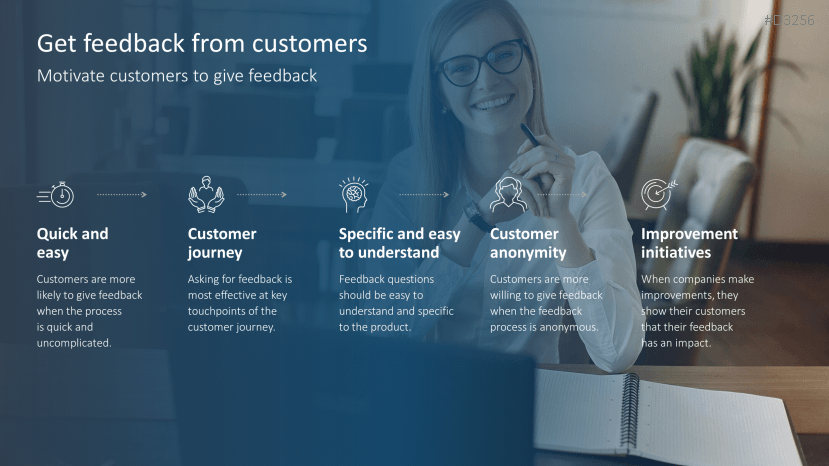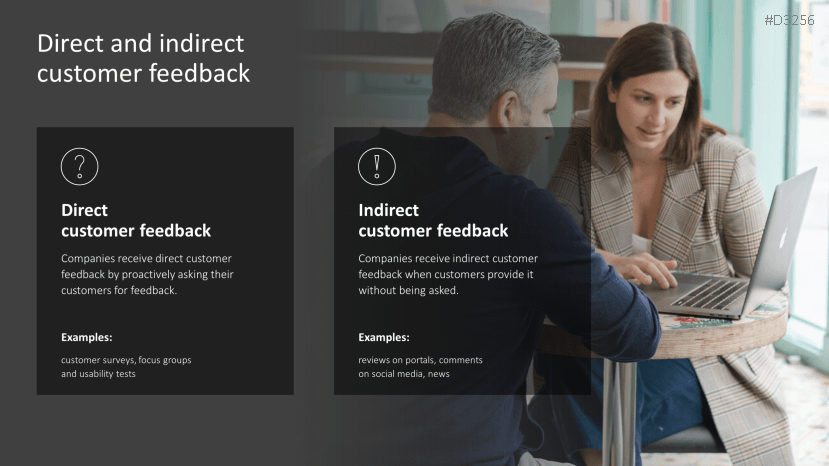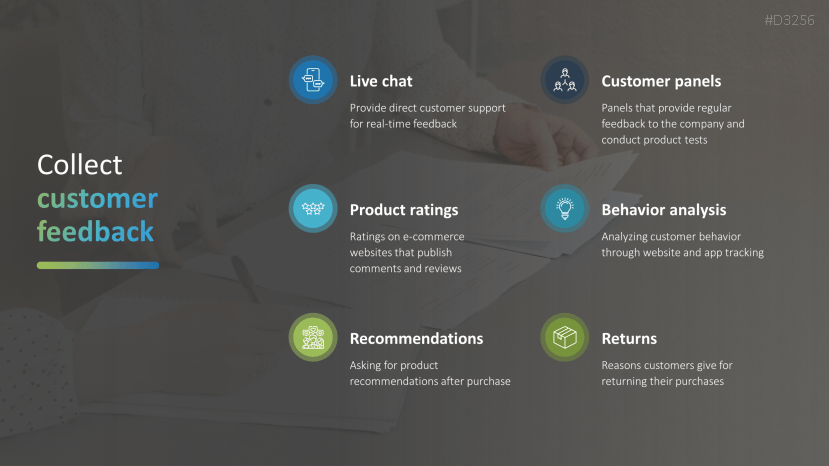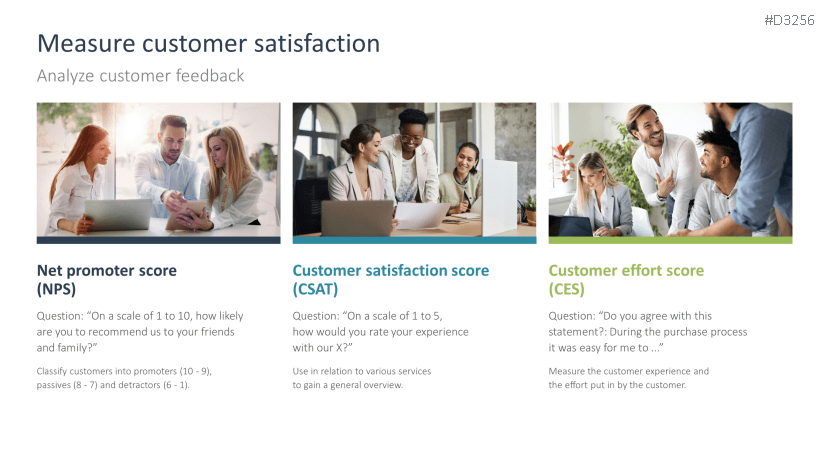
What is constructive feedback?
Feedback is information a person receives about their performance or actions. It can take various forms, including verbal feedback, written evaluations or non-verbal cues. The goal of feedback is to give people insights into their performance. This applies both to their strengths and to areas where improvements can be made. Feedback plays a significant role in the learning process, in personal development and in building effective work relationships. Constructive feedback provides specific information and helpful suggestions for improvement to support positive development.
The importance of feedback in the workplace
Feedback plays a leading role in personal and professional growth in the workplace. It enables open communication between employees and leaders through performance evaluations, clarifying goals and identifying areas for improvement. Constructive feedback allows employees to build on their strengths and work on their weaknesses, which results in improved performance and a positive work environment. Regular feedback also promotes a culture of learning and continuous improvement within the team and organization.
The right way to handle feedback
Accepting feedback requires an open and receptive attitude and a willingness to accept constructive criticism. The key is not to take feedback personally, but to see it as an opportunity for personal growth. This means listening actively, asking questions to better understand the feedback and focusing on specific steps to implement suggestions for improvement. It's also important to appreciate feedback givers for their honesty and effort, and to encourage a culture un which feedback can be given and received openly and transparently.
Everything on feedback in one template
Our new PowerPoint template provides you with essential information on feedback in a concise and ready-to-use presentation. Understand how to structure constructive feedback, the importance of feedback in daily work and the intrinsic value of customer feedback management. You can also present tips on how to handle criticism and tricks for improving the capacity for criticism in your company. Use a variety of tools and methods and organize your feedback sessions like a pro.
With this PowerPoint template, you can
- present key information on feedback.
- emphasize how important feedback is in your company.
- explain tips for increasing your employees' capacity for criticism.
This PowerPoint template includes:
- Quote
- The fundamentals of feedback
- What is feedback?
- Feedback requires context
- Constructive vs. destructive feedback
- Feedback is given when requested
- Formal and informal feedback
- Feedback from different sources
- Appreciative feedback
- Different objectives of feedback
- Feedback challenges
- Feedback in the workplace
- Feedback: an employee management tool
- Why is feedback in the workplace so important?
- Feedback sessions
- A healthy feedback culture creates trust
- Reasons for establishing a feedback culture
- Feedback in the team
- Constructive feedback increases motivation
- Feedback for employee development
- The feedback process
- Feedback loop
- Feedback session process
- Characteristics of effective feedback
- Asking for feedback
- How to prepare for feedback
- How to communicate and accept feedback
- Implement and reflect on feedback
- Methods and tools
- Thirteen golden rules of feedback
- Constructive language in feedback
- Feedforward
- 360-degree feedback
- DESC method
- Start-stop-continue retrospective
- GROW model
- “WWW” feedback formula
- SBI model
- Five-finger feedback
- AMPP method
- SOFT model
- How to handle criticism
- Why is it difficult to accept criticism?
- Why is accepting criticism so important?
- Accepting criticism: key factors
- Roles and skills in the feedback process
- Four types of active roles in the feedback process
- Four types of passive roles in the feedback process
- How to practice accepting criticism
- Test your own capacity for criticism
- Four rules for responding respectfully to criticism
- Feedback management
- Definition
- Why use feedback management?
- Ask the right customers for feedback
- Get feedback from customers
- Direct and indirect customer feedback
- Collect customer feedback
- Measure customer satisfaction





